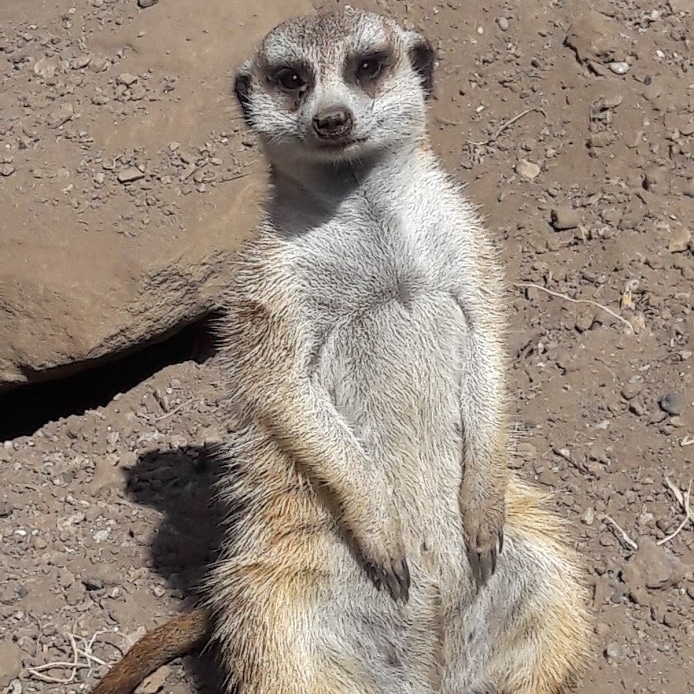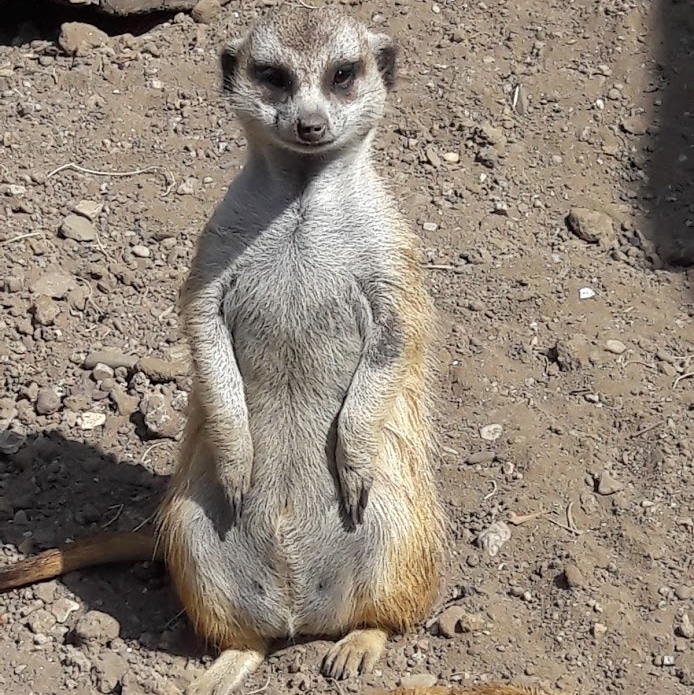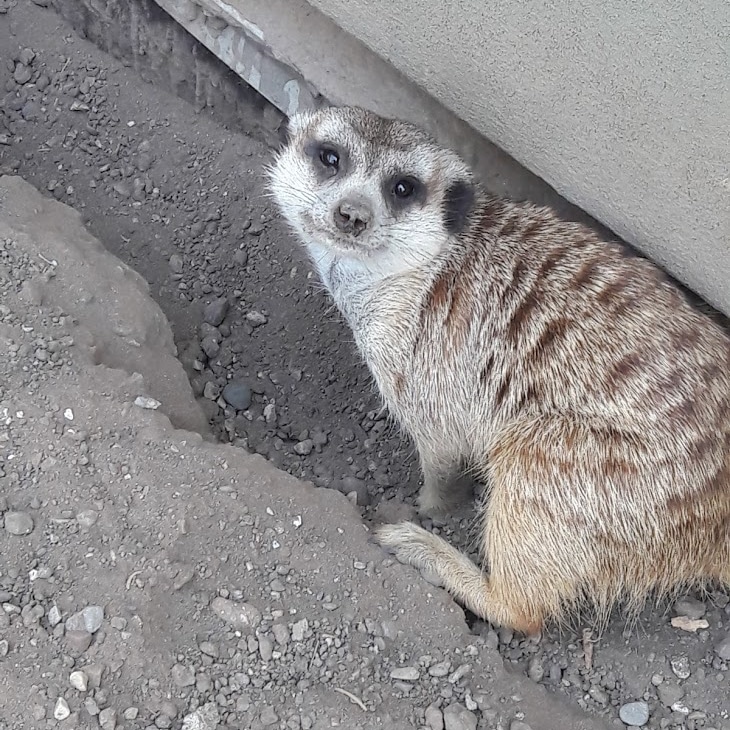
- Born May 2015 with Kala and Zuri
- Bossiest of all the youngest litter, and appears to take the dominant role in the mob

Zuri
- Born May 2015 with Katili and Kala
- Has a dark patch on her right front arm at the inner bend
- Was the runt of the litter, but has grown up to be just as big and strong as her siblings

Kala
- Name is pronounced CALL-ah
- Born May 2015 with Katili and Zuri
- Is the most timid of the mob, always hangs behind to assess any situation
From the Keepers
”Meerkats are very scent-oriented, and I like to give them enrichment that stimulates their olfactory senses. It can even be perfumes and cooking spices, so they can experience the new smells. Or it might be from other Zoo animals, like straw or used hay from the lions or burlap from the island foxes. The best reaction I’ve seen was to wool sheared off of the barnyard sheep. The meerkats were all on high alert and they were cautious to approach it, as it was a novel scent for them. They didn’t know if it was safe or not.
Rachel W.
Burrow Sweet Burrow
The underground colonies made by meerkats consist of two or even three levels of tunnels, interconnected with chambers of about one foot across, with up to 15 entrance holes. Though the individuals generally forage near the burrow, a colony can travel more than 3½ miles in a day looking for food. The Zoo’s meerkat exhibit is designed to allow for burrowing, but also for containment – it’s solid cement at six feet down.
It Takes a Village
Meerkats have one of the most complex social structures of any animal at the Zoo. Each individual has a distinct position within the group. Some spend their days foraging for food, others dig tunnels, and some females are babysitters. Sentries are important, as they take turns watching for predators. Is that an eagle?! If so, the sentry meerkat lets out a distinctive bark to warn the rest of the group to take cover.
Conservation Status
Meerkats are listed as “Least Concern” on the IUCN Red List of Threatened Speciesbecause the species is widespread in southern Africa, and in several protected areas. However, their population can fluctuate greatly within the range and is influenced by rainfall and predation.

Stay on the Trail
Stay on marked trails when exploring natural areas. Many habitats, such as the desert, may look hardy but are actually quite fragile. Small changes in a habitat can make a big difference to the animals living within it.


